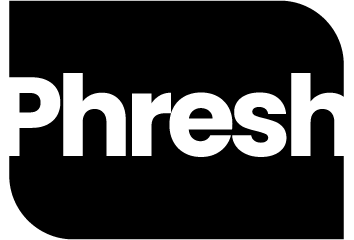Website Design in Millersville, PA
Millersville, PA, a charming borough in Lancaster County, offers a blend of rich history and modern appeal. As a community that values education, being home to Millersville University, and a thriving local economy, Millersville is an ideal place for businesses to establish a robust online presence. For businesses here, having a well-designed website is crucial to reach a broader audience and compete in the digital landscape.
The History of Millersville, PA
Millersville was originally known as “Millersburg” in the early 1800s, named after John Miller, an early settler who built a mill along the Conestoga River. The town’s growth was significantly influenced by the establishment of the Millersville State Normal School in 1855, which was one of the first teacher-training schools in Pennsylvania and eventually evolved into Millersville University. This institution has played a pivotal role in shaping the community, bringing in students, educators, and a spirit of learning and innovation that continues to this day.
Millersville’s historic roots are still evident, with well-preserved buildings and landmarks that tell the story of its development. The borough has maintained its small-town charm while adapting to modern trends, making it a unique place where tradition meets progress.
Modern Website Design Trends
For businesses in Millersville looking to enhance their digital footprint, embracing modern website design trends is essential. These trends ensure that websites are not only aesthetically pleasing but also functional and user-friendly.
- Responsive Design: In today’s mobile-driven world, responsive design is a must. Websites must be adaptable to different screen sizes to provide an optimal viewing experience on smartphones, tablets, and desktops.
- Minimalism and Simplicity: A minimalist approach, characterized by clean lines, ample white space, and a limited color palette, makes websites more intuitive and faster to load, enhancing user satisfaction.
- Microinteractions: These small, subtle animations or effects provide feedback to users, making websites feel more interactive and engaging. Examples include button animations and hover effects.
- Voice User Interface (VUI): With the increasing use of smart speakers and voice assistants, integrating VUI into websites can enhance accessibility and user convenience.
- AI and Chatbots: Artificial intelligence-powered chatbots offer instant customer support and personalized recommendations, improving user experience and navigation.
Essential Tools for Website Design
Creating a modern website involves various tools and platforms:
- Design Software: Tools like Adobe XD, Sketch, and Figma are essential for creating wireframes, prototypes, and high-fidelity designs.
- Content Management Systems (CMS): Platforms like WordPress, Joomla, and Drupal enable designers to build and manage websites efficiently, offering a range of themes and plugins.
- Website Builders: User-friendly builders like Wix and Squarespace allow individuals and small businesses to create professional websites quickly without needing extensive coding knowledge.
- Front-End Frameworks: React, Angular, and Vue.js are crucial for building dynamic and responsive websites, offering reusable components and streamlined development processes.
Best Practices for Website Design
- User-Centered Design: Prioritize the needs and preferences of the end user through user research, creating personas, and conducting usability testing to ensure the website meets user expectations.
- Mobile-First Design: Design the mobile version of a website first, ensuring optimization for smaller screens and a seamless experience for mobile users.
- Accessibility: Implement features like alt text for images, keyboard navigability, and screen reader compatibility to ensure inclusivity and enhance SEO performance.
- Performance Optimization: Minimize page load times, reduce server response times, and optimize images and files to improve website performance and user experience.
- SEO Integration: Use relevant keywords, high-quality content, and proper site structure to enhance visibility on search engines and improve rankings.
The Future of Website Design
Emerging technologies promise to revolutionize website design:
- Augmented Reality (AR) and Virtual Reality (VR): These technologies offer immersive and interactive experiences, particularly beneficial for e-commerce and educational websites.
- Advanced Personalization: AI and machine learning enable highly tailored content and experiences, improving user engagement and conversion rates.
- Blockchain Technology: Enhances security, transparency, and data integrity, especially for e-commerce sites and platforms handling sensitive information.
- No-Code and Low-Code Platforms: These platforms democratize website design, allowing individuals with minimal programming knowledge to create complex websites using visual interfaces and pre-built components.
Wrapping Up
Millersville, PA, with its historical charm and forward-thinking community, is an excellent location for businesses to thrive in the digital age. Embracing modern website design trends and best practices can help Millersville businesses enhance their online presence and connect more effectively with their audience. As the digital world continues to evolve, staying ahead with innovative and user-friendly website designs will be key to success.
By leveraging the latest tools and technologies, businesses in Millersville can ensure their websites are not only visually appealing but also functional and optimized for all users. Whether you’re a small business looking to establish an online presence or a larger company seeking to improve your digital strategy, modern website design is essential in today’s competitive market.
Let’s Get Started
Elevate your business with a professional, high-performing website designed by Phresh. Contact us today to start your journey. Let’s work together to create a website that not only looks great but also drives results.



